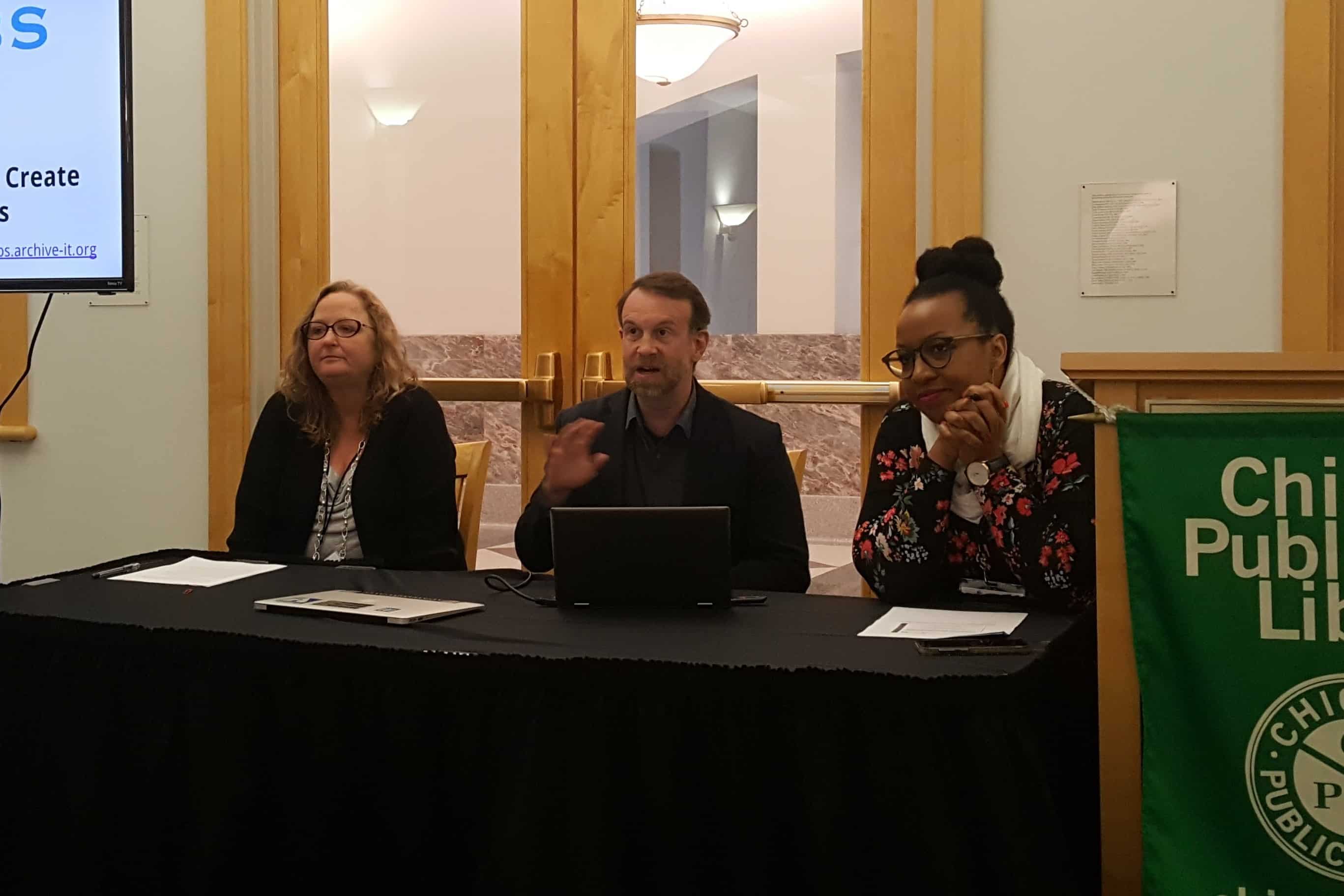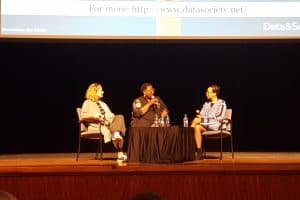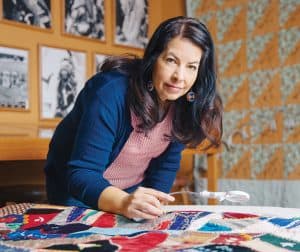
How can libraries preserve local digital content, connect researchers with resources in a way that saves time for reference staffs, and curate and present their physical collections in unique digital ways? At DPLAFest 2019 on April 17 in Chicago, speakers addressed ways to preserve and highlight collections while amplifying marginalized histories and connecting with communities.
Archiving the local web
In order to maintain their local collections, public libraries are looking to web archiving. “Community Webs: Empowering Public Librarians to Create Community History Web Archives” explored how two public libraries are using the Internet Archive’s Community Webs program. Jefferson Bailey, director of web archiving and data services at the Internet Archive, explained that the program provides subsidized access to and storage on the archive’s Archive-It tool, as well as funding for professional development, local programming, and conference participation.
Partner libraries have used the tool to archive responses to natural disasters, preserve records of local communities, and engage their communities in the preservation process.
Birmingham (Ala.) Public Library (BPL) uses the tool to archive its own websites along with city, public, and private school sites. They have also connected with community groups about preserving other local websites and social media. “We realize our project will only thrive when we include community members as part of the process,” said Melinda Shelton, BPL’s web services librarian.
The Schomburg Center for Research in Black Culture, part of New York Public Library, has a broader preservation mandate. One of its first web archiving projects was the #HashtagSyllabusMovement, which preserved spontaneous syllabi and reading lists created around current events that have engaged the black community.
In November 2018, Makiba Foster, assistant chief librarian at the Schomburg Center, began archiving the websites of black women running for office in the US midterm elections. “I thought it would be a beautiful snapshot of history,” she said. Campaign sites are a perfect example of how web content can evolve over time, she said, and archives can preserve that timeline “if you look at a campaign site over time, from domain purchase to 404.”
Connecting researchers
The US National Archives and Records Administration (NARA) created History Hub two years ago to help history researchers find answers—and save NARA staff time on repeated questions. It’s part crowdsourced forum and part community. Pamela Wright, chief innovation officer at NARA, introduced the platform at her session, “Next Generation Reference: History Hub.”
The Hub is based on NARA’s ongoing research into how organizations communicate with and serve their audiences. When users enter a question that’s been asked before into Google or another search engine, History Hub questions and answers will appear in the results, which is intended to direct people to quality information and cut down on duplicate questions for reference staff. By allowing answers from users as well as verified NARA experts and the Library of Congress, users get quick answers, often within minutes. Staff and users can also see which questions are most popular, and follow-up questions are easily sorted into relevant headings.
NARA is looking for partners in this project, especially smaller libraries that have more niche or localized information. The benefit, says Wright, is that once your FAQs are posted on the platform, you can get rid of common questions “and just answer the really interesting ones.”
Pinning historical maps
Ryan Ehrfurth, digital history and maps librarian at Arizona State Library, started using Story Maps to promote the library’s collection of historical maps in 2016. He outlined his experience at his session, “Digital Storytelling with Historic Maps.”
Story Maps are a template for geographic information system (GIS) software ArcGIS that can build interactive maps to present past information in current context. Ehrfurth’s maps “tend to have a historical narrative.” He has published interactive maps that tag historic photos of Arizona railroad towns to their locations, that overlay maps of Arizona’s shifting boundaries over its present border, and explain how places got their names. The map with the greatest user engagement has been the map of railroad towns, according to Ehrfurth, because of an active railroad enthusiast community.
Sharing digitized segments of collections expands the reach of physical collections, he says. In a collection with 30,000 maps, curating them into digital collections “makes the discovery process a little easier.”
He sees it as a way to help correct historical erasures as well. “How did Arizona get its shape? War, racism, manifest destiny,” he says. “There’s a really complex history.”


